If you’re dreaming of a California road trip, make sure you plan enough time to include iconic Big Sur in your plans. In Big Sur, dramatic cliffs meet the vast expanse of the Pacific Ocean, and ancient redwoods tower above enchanting coastal landscapes. It’s on Highway 1 south of San Francisco and known for being a truely dreamlike destination that beckons adventurers, nature lovers, and anyone seeking a bit of tranquility and fresh air.
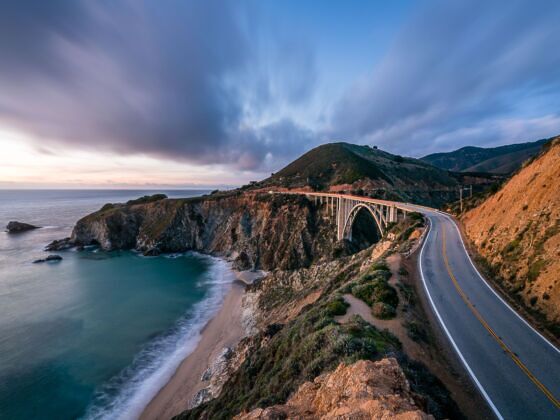
A Quick and Useful Guide to Big Sur, California
But because Big Sur is a bit removed from any major metropolitan areas or cities, it can be a little hard to reach. It can also be confusing to know exactly where to go when you’re there, since Big Sur isn’t an official town.
Fortunately, this guide to Big Sur should help make your trip-planning quite a bit easier.
What is Big Sur, California?

Photo: RAW-films/Shutterstock
Big Sur is a rugged region of coastline in the central part of the state. There’s no town of Big Sur, though there is an unincorporated village called Big Sur Village. But when people say Big Sur,” they’re referring to the area that loosely compromises land south of Carmel-by-the-Sea to just north of San Simeon. But the boundary is loose, and different people have different definitions (and hotels will claim they’re in/near Big Sur so they can charge a bit more).
It’s one of the prettiest places in California and has been used as a backdrop in several famous movies, especially around the famous Bixby Bridge. Most recently, it was the backdrop for HBO’s hit series “Big Little Lies.” However, it’s not just Highway 1 that makes the area so special. It’s home to the Santa Lucia Mountains that rise dramatically from the ocean, as well as gorgeous beaches and hikes through redwood forests. It’s also home to beautiful places to eat and drink, including a cliffside cafe beloved by the most important writers and artists of the Beat Generation.
Big Sur, California, is technically a region. But for many visitors, it’s a slice of (mostly) undeveloped California beauty, conveniently placed between San Francisco and Los Angeles.
How far is Big Sur from San Francisco?
The distance between San Francisco and Big Sur is approximately 140 miles, depending on what route you take. It takes about 2 hours and 15 minutes with no traffic to reach Big Sur from San Francisco’s airport, but of course, bad traffic can make the drive take much longer. Traffic from SF to Big Sur is usually slowest on Friday afternoons when everyone is driving there for the weekend, and slowest on the reverse route on Sunday afternoons when everyone is returning to the city. Avoid those times as possible. Take the inland route through Gilroy for farm stands and wineries, or the coastal route for forests and beach towns.
Almost everyone who visits Big Sur from San Francisco has a car. You can fly to Monterey and take a taxi or ride share from there, but it’s expensive, and it’s hard to get around Big Sur without a car. Highway 1 is the only road along the coast, and taxis would be very expensive. And given how beautiful the drive is, it’s worth renting a car. San Francisco International Airport is the largest airport in the Bay Area, but you can also fly into Oakland (2 hours, 15 minutes with no traffic) or San Jose Mineta International Airport (1 hour, 45 minutes with no traffic).
What to do in Big Sur
Wildlife watch

Photo: Superjoseph/Shutterstock
Every winter, grey whales and humpback whales migrate along the Big Sur California coastline. You can whale watch from many parks and lookout points in Big Sur, and parks like Julia Pfeiffer Burns State Park often have rangers on hand during December and January to help visitors spot the giant marine creatures. If you’d like to go out on a whale watching boat trip, you’ll likely need to head north to Monterey. Companies like Monterey Bay Whale Watch, Princess Whale Watching, and Discovery Whale Watch run trips that leave from Fisherman’s Wharf. Dress warmly year-round.
If you don’t want to take a tour, just find a good place to sit for a few minutes on any of the cliffs around Point Lobos Sate Natural Reserve. You’re very likely to see sea otters, and sea lions also live in the area. Further to the south in Big Sur, you may be lucky enough to see elephant seals. There’s a rookery at San Simeon, but they’ve been spotted further north than that, closer to Lime Kiln State Park.
Road trip on Highway 1
Hit the beach
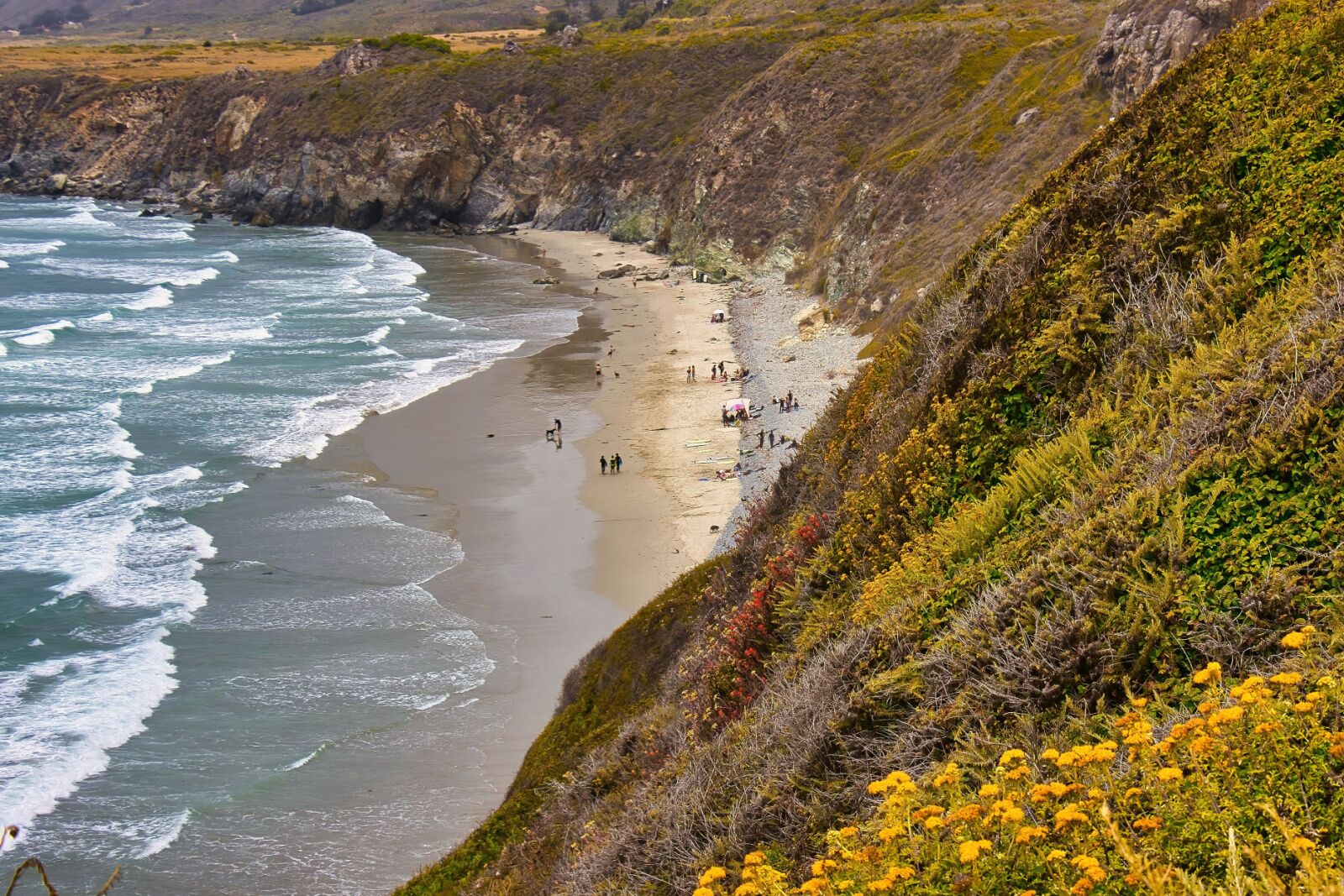
Sand Dollar Beach, Big Sur, California. Photo: L Paul Mann/Shutterstock
Big Sur, California beaches run the gamut from sandy beaches for tanning and laying out to dramatic cliffs where waves crash hundreds of feet below the roads. There are plenty of beaches to choose from, including Sand Dollar Beach (the most relaxing, lay-on-the-sand beach in the area) to the coves of Point Lobos State Park, popular with photographers (and sea lions). In general, Big Sur is breezy and a bit cool, so the best season for warm-weather beach action is July and August. But year-round, the beaches are beautiful places for picnicking, tidepooling, birdwatching, and more.
Big Sur State Parks
For many visitors, Big Sur’s park’s are the main draw. You haven’t gone to Big Sur if you haven’t stopped at at least one of the parks below.
Garrapata State Park

Photo: Lebid Volodymyr/Shutterstock
Garrapata State Park is one of the most unspoiled parks in Big Sur, with rugged, rocky coastline, plenty of wildflowers, and a secluded beach. The park is perfect for photographers, hikers, and bird watchers, thanks to a population of peregrine falcons and the occasional California condor.
It’s one of the least-crowded parks in Big Sur, despite being home to beautiful vista points like Soberanes Point. It has two miles of beach (some of which are dog-friendly) and inland trails through redwoods. If you’d like to avoid people, or don’t have lots of time to drive deep into Big Sur, go there. The 4-mile Soberanes Canyon Trail is one of the best in the park, winding through redwoods before opening to gorgeous views of the Monterey Bay Marine Sanctuary. Parts of the trail are closed occasionally for flooding and erosion, so check the trail status before heading out.
This is unique among Big Sur state parks in that there’s no entrance fee.
Point Lobos Natural Reserve

Photo: Randy Andy/Shutterstock
Point Lobos is technically not a Big Sur state park — it’s a state natural reserve. But close enough. It covers roughly 1,300 acres with dramatic cliffs and coastal walks, hidden coves, and lush forests. The reserve was established in 1933, making it the first protected marine reserve in California. Its conservation efforts have helped preserve the area’s unique wildlife and pristine natural environment, and visitors are likely to see sea otters, harbor seals, and various bird species. With a keen eye, you may even spot migratory gray whales passing through in winter.
The entire area is a marine reserve, and activities range from scuba diving (reservations required) to walking the .4-mile Sea Lion Trail to spot the trail’s namesake creatures. The park has lots of guided events and walks throughout the year, an interesting whaling museum (open 9 AM to 5 PM, pending staff), beautiful beaches, and enough hiking trails to fill a day. Parking has a $10 fee and can fill up quickly, so try to get there in the morning if you’re visiting on a summer weekend.
Andrew Molera State Park
Andrew Molera State Park is one of the oldest state parks in Big Sur, with a wild and rugged coastline, trailing vines, and an abundance of wildlife. The park is famous for its stunning views of the Pacific Ocean and one of the best for hiking thanks to more than 20 miles of hiking trails. A good pick is the 2.6-mile Panorama Trail through a “pygmy redwood forest.”
This park is also home to the California Condor Discover Center as well as the Molera Ranch House Museum, showcasing the Big Sur of 100 years ago. The Discovery Center is open on weekends in the summer, while the museum is only open on Saturdays. There’s a $10 fee to enter the park, and if you’re planning on tidepooling, be sure to check the tide report before heading to the beach. This is one of the few Big Sur state parks that allows biking on some trails, and camping is also an option, though you’ll want to make your reservations in advance.
Pfeiffer Big Sur State Park

Photo: BDLane/Shutterstock
Near the middle of Big Sur is Pfeiffer Big Sur State Park. It’s a 1,000-acre park with towering redwoods, sparkling streams, and a rugged canyon. The park is open year-round and known for hiking, an excellent campground, and early morning beachcombing and tidepooling. The Buzzard’s Roost Trail is a lovely 2.8-mile trail with panoramic views of the coast, and the Pfeiffer Falls Trail is a pretty 1.5-mile route through a redwood grove and past a huge waterfall. Note that the Falls Trail is closed as of July 2023 for storm damage, but will likely reopen as soon as some of the bridges are repaired.
Julia Pfeiffer Burns State Park
Julia Pfeiffer Burns State Park is a different park of a similar name, known for its turquoise-colored waters and varied hiking terrain. It’s also home to the the iconic McWay Falls that tumbles 80 feet into the ocean. This park is perfect for photographers, hikers, and beach lovers alike. If you want to take photos of McWay Falls, use the walkway under the road — don’t try to walk across Highway 1. There’s no access to the beach at McWay Falls.
Do an online search for the best long hikes in Big Sur, California, and you’ll likely learn about the Tanbark Trail and Tin House Loop. The 6.-5-mile trail gains more than 2,000 feet of elevation as it passes up and down through the park’s various ecosystems and landscapes. You can also spot whales from some of the trails during migration season in December and January. Note that some trails are still closed from earlier storm and wildfire damage, so check the trail status page before setting out (as of July 2023). The entrance fee at this park is also $10.
Is Big Sur a national park?
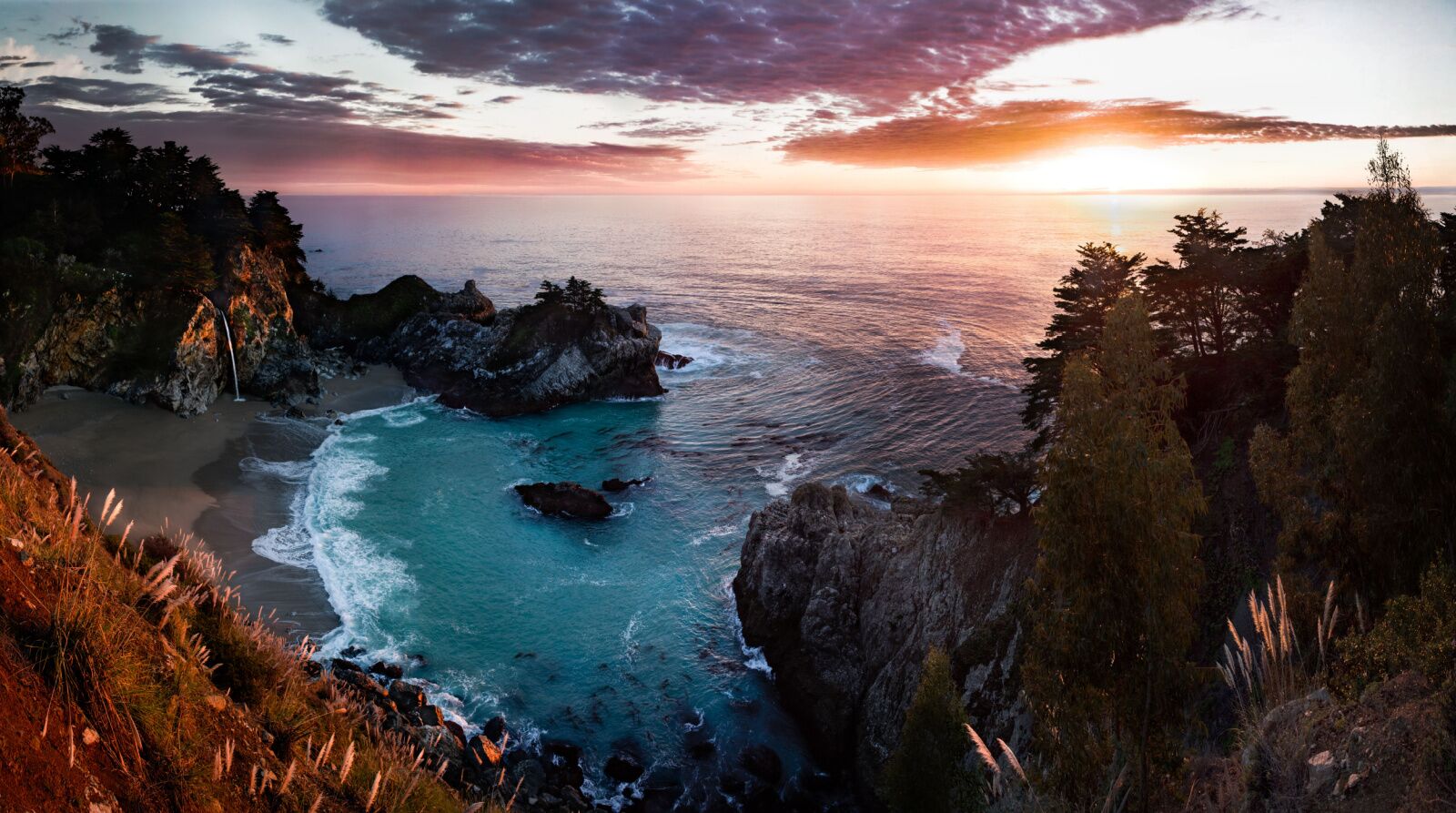
McWay Falls in Big Sur. Photo: Varun Ram/Shutterstock
Big Sur is not a national park — but that doesn’t mean it’s not protected. In fact, Highway 1 (the curvy, gorgeous road that runs along the coast in Big Sur) is an American National Scenic Byway, designated and protected by the federal government. It’s protected primarily for its beautiful coastal views, so it’s unlikely that they’d ever allow any development or significant changes to the route.
Aside from Highway 1, much of Big Sur is either a state park or some other type of protected area. Popular parks in the region include Julia Pfeiffer Burns State Park, Andrew Molera State Park, Point Lobos State Reserve, and Pfeiffer Big Sur State Park, among other, and almost everything that isn’t a state park is part of a Los Padres National Forest. And you’d be hard-pressed to find a resort or restaurant in Big Sur that isn’t surrounded by acres of lush forest. It’s not an over-developed kind of place.
What does Big Sur mean?
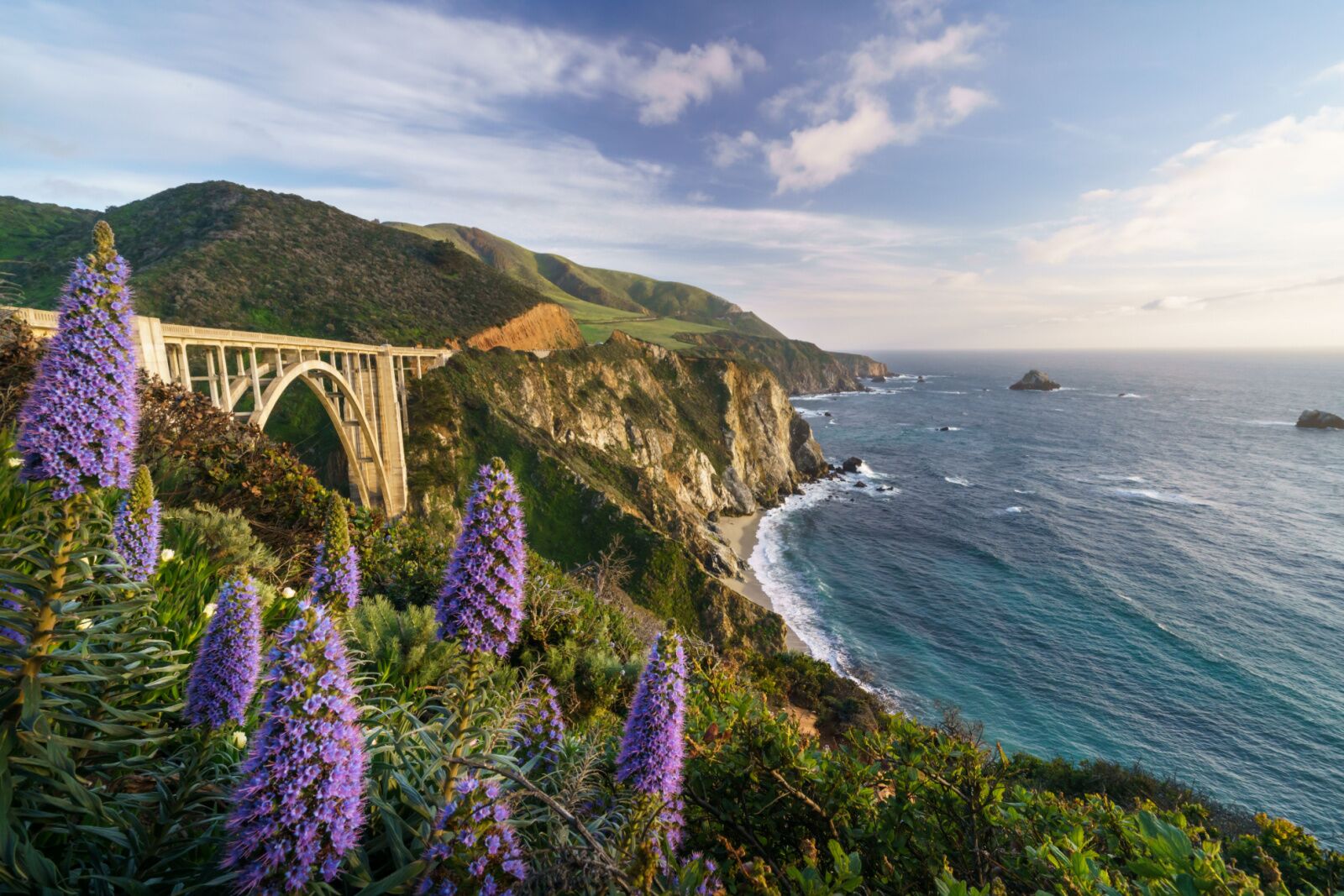
Photo: Phitha Tanpairoj/Shutterstock
Anyone who speaks Spanish will know what “Big Sur” means — the Big South. It was named by Spanish missionaries and explorers in the 15th century, who referred to the entire coastline as El pais grande del sur — the big country of the south. That name more or less caught on, and it became the official name of the first post office in the 1930s. The moniker stuck around to refer to the region on the whole.
Of course, Native Americans lived in the region long before the Spanish, and had their own words for the lands and coastline in the region we call Big Sur today. The main tribes in the region were the Ohlone, the Esselen, and the Salinan, among others, many of whom lent their names to modern-day places in Big Sur. Some tribes, like the Esselen, are still landowners in the area. You can learn more about Big Sur’s Indigenous people at the Pacific House Museum in Monterey.
The best places to eat in Big Sur
Nepenthe
Nepenthe is famous for being the gathering place in the 1950s and ’60s of Beat Generation poets and writers, including Jack Kerouac, Henry Miller, and many of the most influential voices of the time. The restaurant has a huge deck on the oceanside of Highway 1, and is open for lunch and dinner. It’s walk-in only, so go around 4 PM, or plan for a wait.
Big Sur Deli
Big Sur Deli will forever be a classic in Big Sur, with a walk-in deli and snack shop that makes the perfect place to stock up for a coastal picnic. It’s open daily until 8 PM, but expect a wait if you visit between 11 AM and 2 PM.
Sierra Mar
Sierra Mar at the Post Ranch Inn is one of the most special dining experiences in California, let alone in Big Sur. The glass-walled restaurant sits high above the coastline and offers a three-course lunch or four-course dinner. Reservations are essential, and you should expect to spend roughly $200 per person, without drinks.
Are there bears in Big Sur?

Photo: Nickolay Stanev/Shutterstock
Yes, there are black bears in Big Sur, California. Sightings are very rare and far less common than they are in the mountains of California, but if you’re lucky, you might see one. And yes, lucky is the right word. Black bears are cute and fun to watch, as long as you practice bear safety. If you see one, maintain a safe distance and never get close — give the bear time to move away before continuing. If you’re camping, always put all food and anything with a scent in a secure storage bin (most campgrounds have bins for food storage). If a bear accidentally comes close to you, speak in a calm voice and slowly back away. Black bears are relatively small and generally very skittish, so the odds are that if you see one, it’ll run off into the woods as soon as it sees you.
Remember: bears are wild animals and are attracted to the smell of food. If you leave food out in the woods, you can’t be surprised if a bear comes to check it out. However, it’s not healthy for bears to become reliant on humans, so it’s your responsibility as someone recreating in nature to know the rules and know what to do to help keep bears (and other wildlife) wild.
Where to stay in Big Sur
If you’re looking for an inexpensive place to stay in Big Sur, you won’t find it. The few hotels along Big Sur’s coastline are quite pricey, as are most of the hotels north of the region in Carmel-by-the-Sea. You’ll need to go to Monterey (about 40 minutes north) or San Simeon to the south to find hotels in the under-$200 price range. There’s a smattering of Airbnbs around Big Sur that are less expensive than hotels, but still pricier than anything you’d find in Monterey.
We hope you love the
Ventana Big Sur
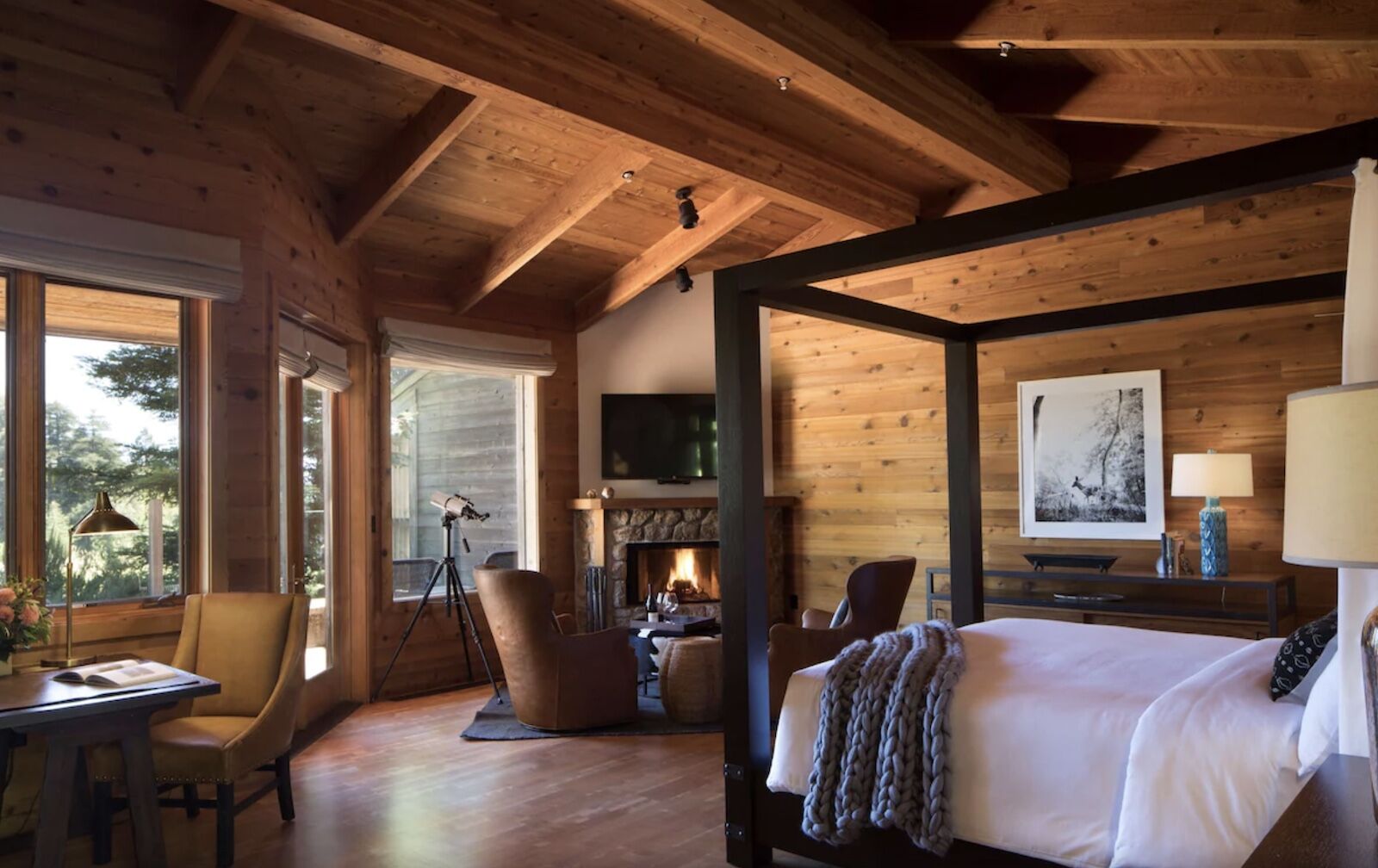
Photo: Expedia
There’s no beating around the bush: Ventana Big Sur is very, very expensive. But in terms of where to stay in Big Sur, this is one of the best hotels you can possibly pick. It’s an adults-only hotel and the epitome of wooded five-star living. Each room is designed with natural materials and activities for guests range from art and culture tours to foraging tours. Prices start around $1,900 a night, so start saving up.
Big Sur Lodge
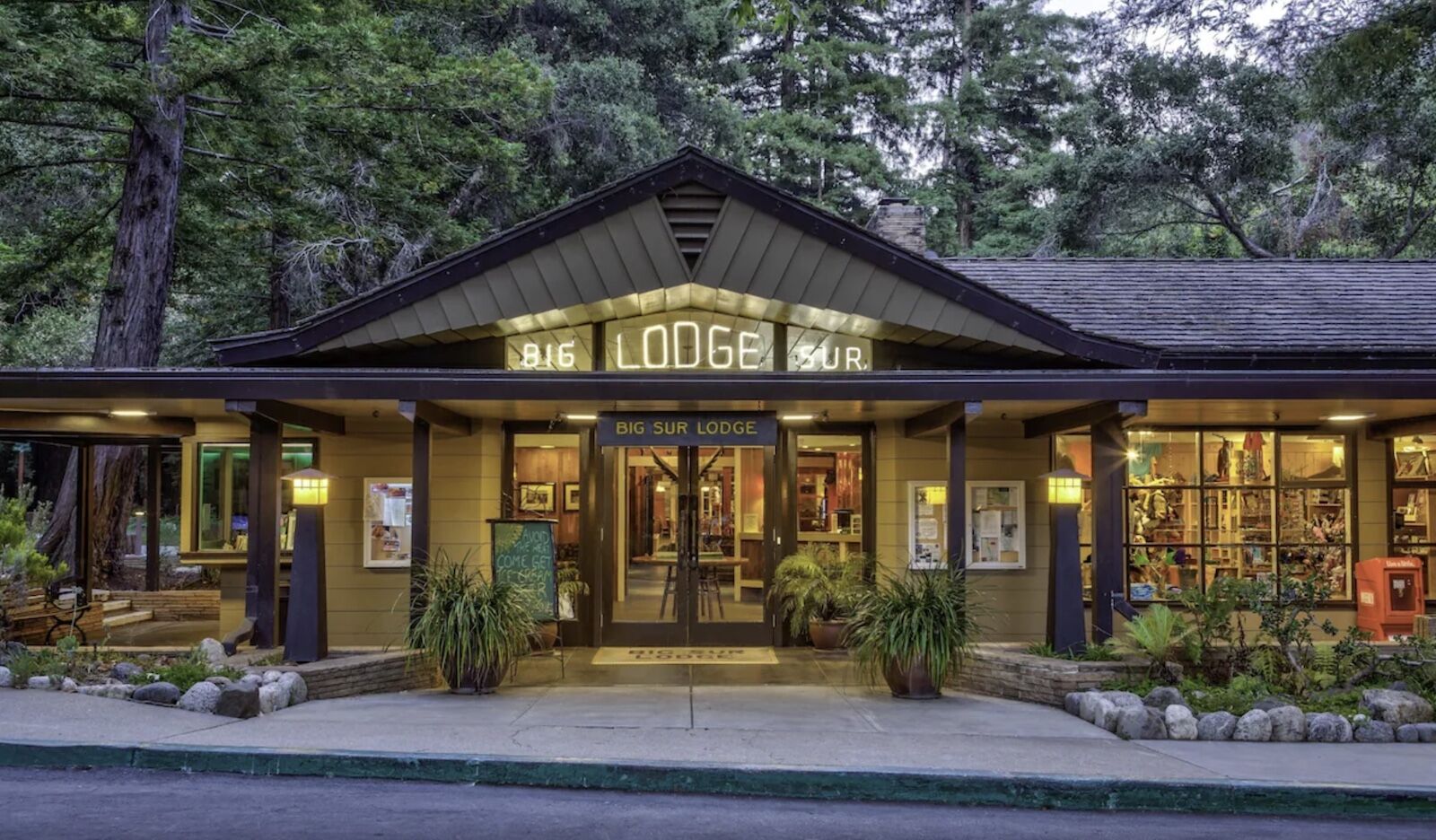
Photo: Expedia
Big Sur Lodge is one of the most affordable places to stay in Big Sur, though it’s still quite expensive — as are most hotels in Big Sur. This cozy lodge is a classic motor inn with a bit of high-class, California flair. It’s very close to Pfeiffer Big Sur State Park and has an on-site restaurant, plus an outdoor pool and hiking trails starting on property. Rooms start at $249 a night.
The Cypress Inn
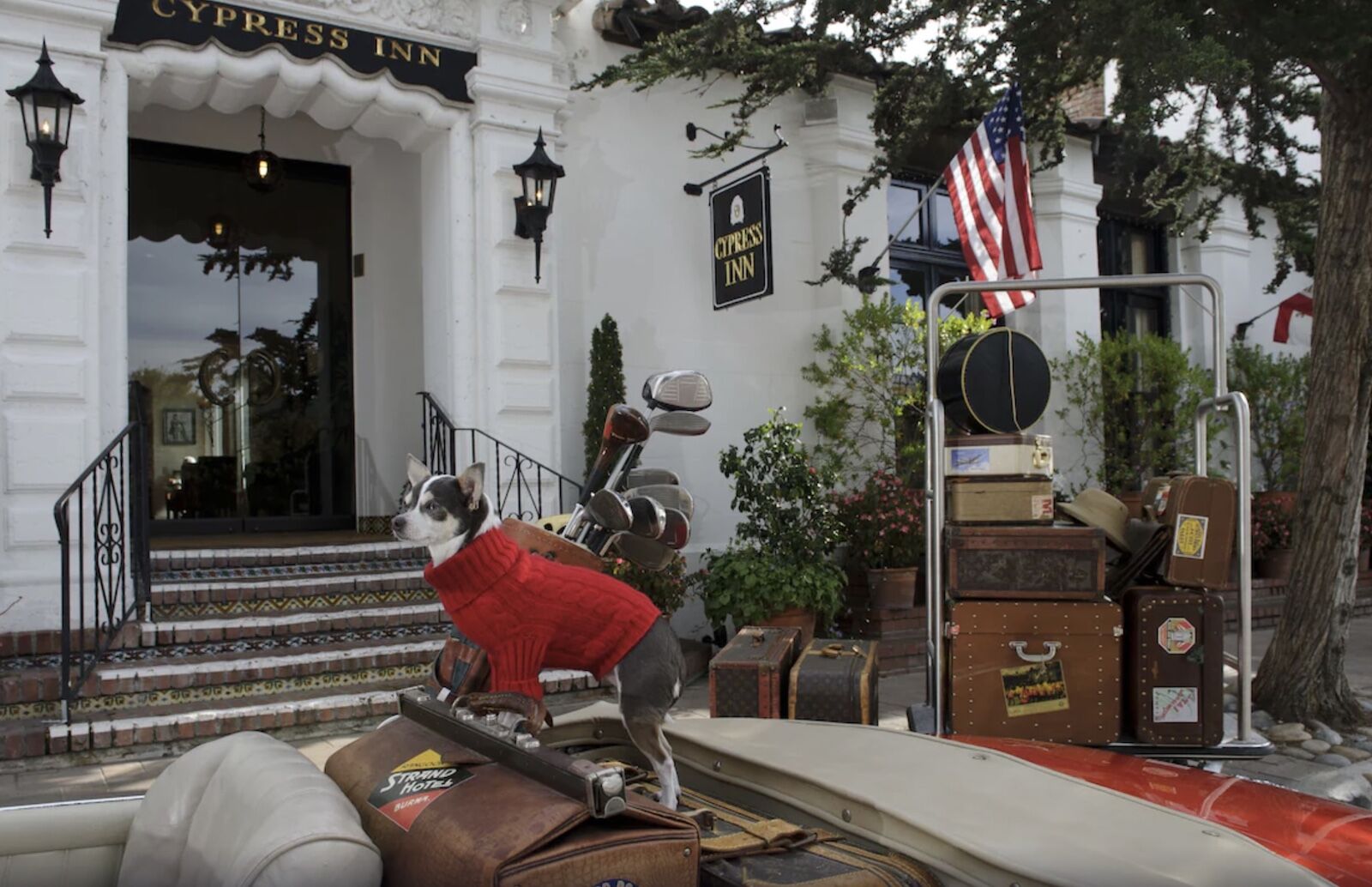
Photo: Expedia
The Cypress Inn is an extremely dog-friendly boutique hotel in Carmel-by-the-Sea, about 15 minutes north of Big Sur. It was once owned by Hollywood superstar Doris Day, has a very popular on-site cocktail lounge, and is just a short walk from the tasting rooms, boutiques, beaches, and galleries of the town of Carmel. Rooms start around $300 per night.